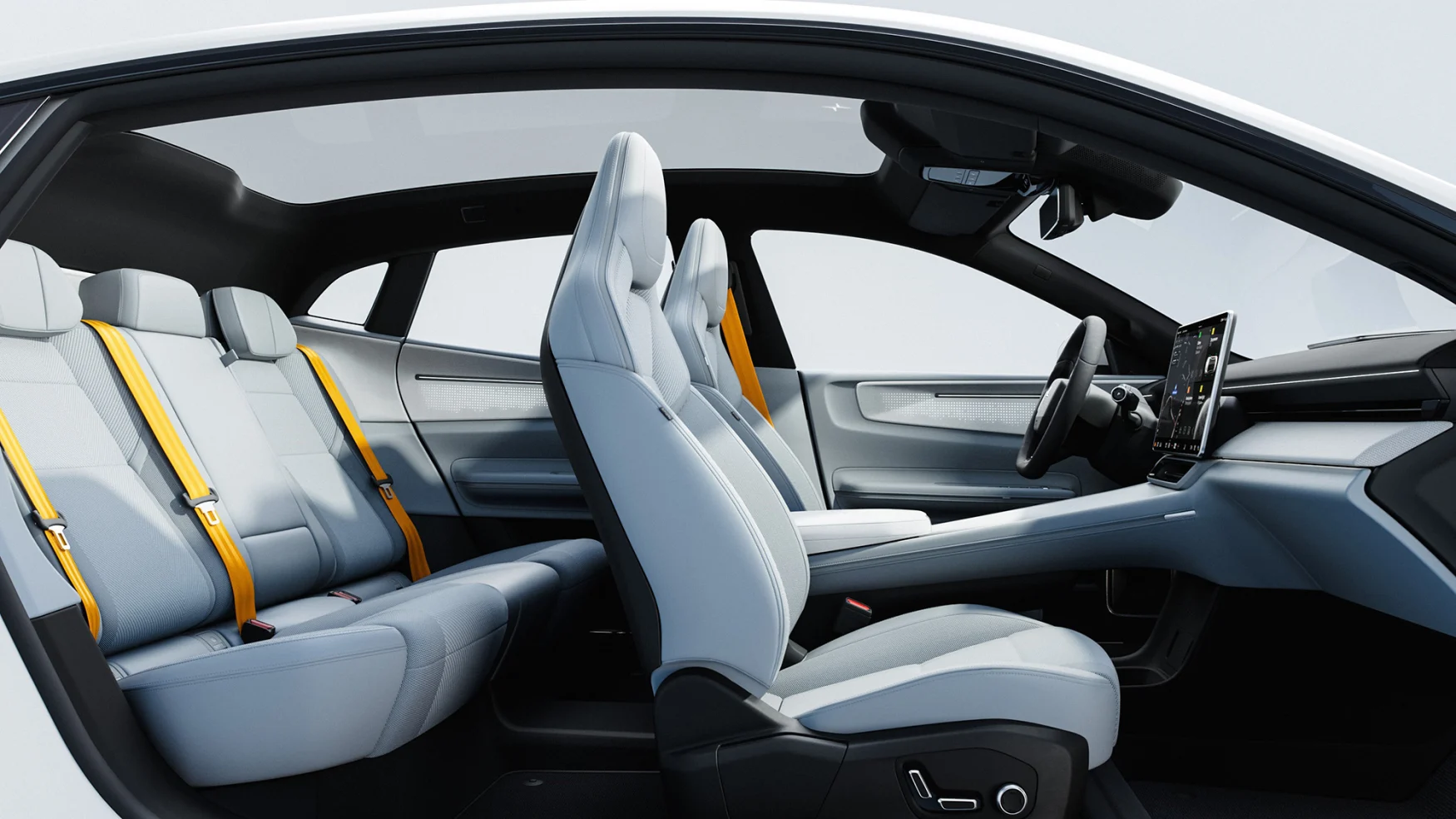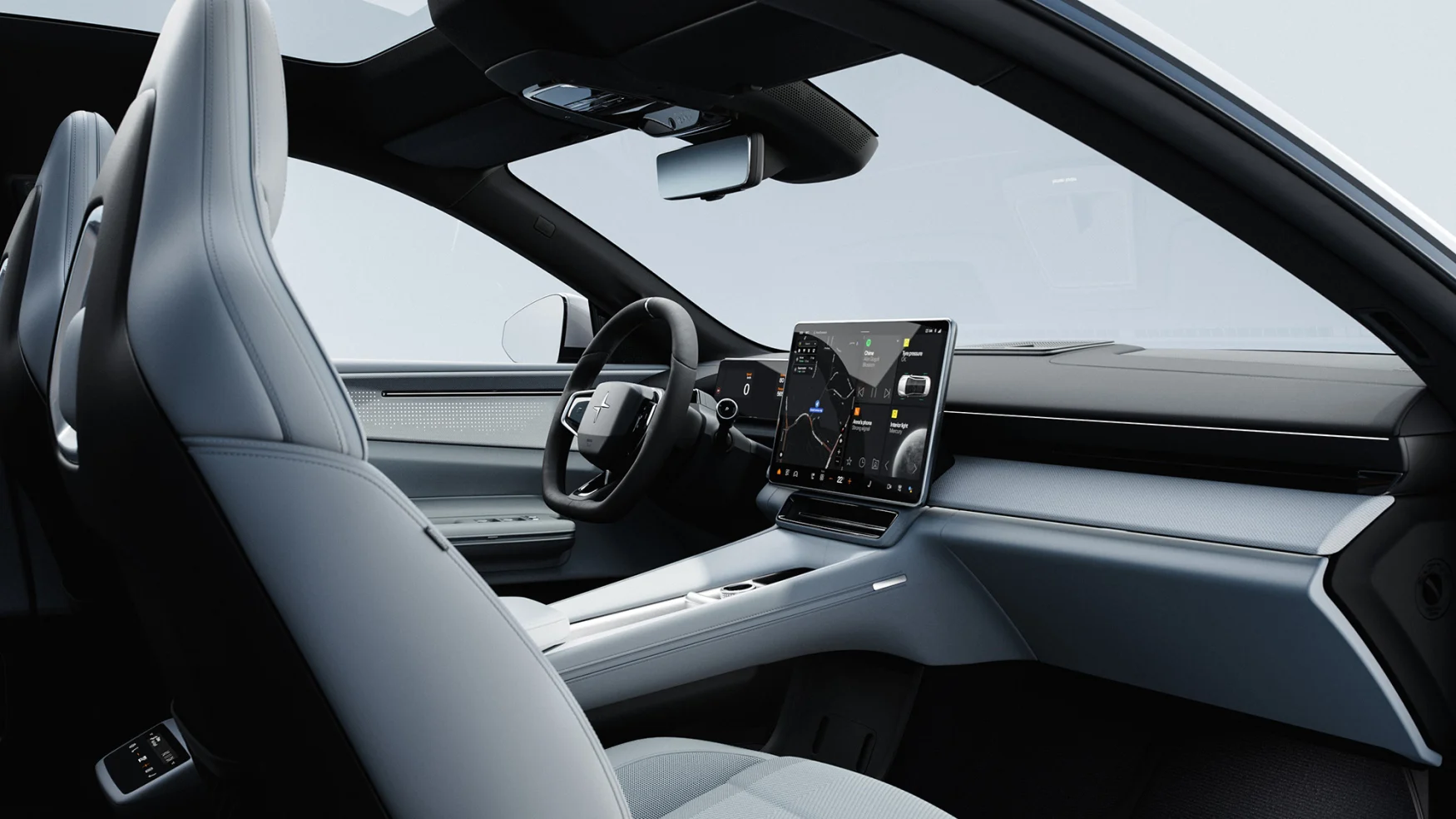
Polestar has revealed its coupe-style electric SUV at the Shanghai Auto Show, and as expected, the Polestar 4 is a head turner with a lot of power. It also has a pretty bold design choice: there’s no rear window, so the driver’s rear view is provided by a camera. The idea is to create “a new kind of immersive rear occupant experience,” the company wrote in an announce post for the new EV.
It’s the company’s second SUV after the larger Polestar 3, set to go on sale this year, and bigger than the Polestar 2 sedan. With a large 102kWh battery, it has a 300-plus mile targeted range and $60,000 starting price, with both all-wheel and rear-wheel drive versions. It’ll go on sale starting in China by the end of the year, and launch in North America in 2024.

Design-wise, the Polestar 4 has a sleek and sporty design (for an SUV) broken up by subtle body panel creases and mildly bulging fenders. The lack of a rear window is an odd decision, as it’s bound to make the interior feel a bit… stuffy. However, there is a standard full-length glass roof with optional electrochromic functionality that allows for opaque or transparent usage. To bring in a bit more light, it stretches down below the rear occupants’ heads as well.
A high-definition screen up front displays the view from the rear camera. Polestar says it allows for “a far wider field of view than what can be experienced in most other cars.” Hopefully the company has a backup system of some kind, because if the screen or camera go down, drivers will have a massive blind spot behind them.

The Polestar 4 is built on parent Geely’s open-source Sustainable Experience Architecture. It won’t have a third row like some variants of Tesla’s Model Y, so the company is instead promising “generous interior proportions” for both front and rear seat passengers. The interior and materials drew inspiration from the fashion and sportswear industries, Polestar wrote.
For an SUV, it’ll go fast. The 544 horsepower model will allow you to go from zero to 62MPH in 3.8 seconds, to start with. Polestar will also offer a 272HP, long-range single-motor version. The optional 102kWh battery has a targeted range of 560 km (348 miles) on the WLTP cycle, or around 300 miles in EPA terms. And charging should be quick, with up to 200kW fast charging that should allow about 800 miles of charge per hour.

Like the Polestar 3, the 4’s driver-assist (ADAS) system will run NVIDIA’s Drive computing platform, using 12 cameras, one radar and 12 ultrasonic sensors. One of those cameras is dedicated to monitoring the driver’s head and eye movements to warn them of fatigue or incapacitation.
A 10.2-inch instrument cluster and 14.7-inch heads-up display (HUD) shows speed, drive mode, turn-by-turn directions and more. The infotainment system is powered by Android Auto installed on a 15.4-inch center screen, with Apple CarPlay available as well. A Harman Kardon audio system is on option with 12 speakers and a 1,400-Watt channel-hybrid amplifier.

As mentioned, “indicative launch pricing” starts at $60,000 in the US, with availability slated for 2024. No current Polestar models qualify for the $7,500 US tax credit, which requires North American production and battery sourcing — and it’s not clear where the Polestar 4 will fall. After the latest rules went into effect, only six EVs still qualified for the full credit.
The company has yet to announce details about North American production. But if the company wants to qualify for the $7,500 tax credit, it will need to assemble it in North America as well as figure out a supply chain that’s independent from China.
Author: Steve Dent
Source: Engadget



